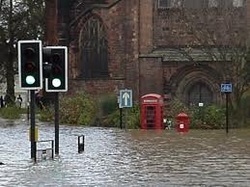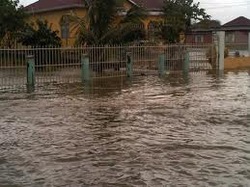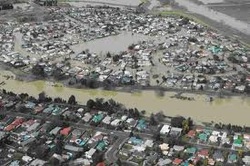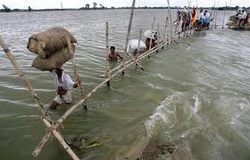
Fortunately for a few, they need not be concerned with floods along with its after-effects. But a lot of countriesall over the world must be at the constant lookout for floods with a light rain. Of course, floods aren't just due to rains. From time to time, an overflowing dam or snow melting could also result in them.
There are floods which spend some time to grow, thus, locals have the time to accumulate their stuff and transfer towards a much safer area. Usually there arethose floods, however, which rise up swiftly. Now, these are really dangerous for everyone aren’t adequately warned about it.
When compared to other natural phenomenon, running water has a real great damaging power. If this hit, poorly-built structures are wrecked and carried off. Even those infrastructures which individuals thought are very strong aren't any match to its strength. For several days, cities and towns remain hard to get at because of the total degeneration in their bridges, roads, and streets.
Sometimes, in spite of flood mitigation set ups and flood barriers in position, some countries still go through significant ruin. How much more for people without defense set up?
For example, in the USA, where sophisticated flood barriers and signals happen to be built, they still experience losses in properties and infrastructures amounting to $6 billion and death tolls for a minimum of 140 individuals yearly. As well as in a report by a major international non-profit organization, coastal flooding (it happens when a tsunami cause the sea waters to flow on the lands) alone causes damage worth $3 trillion all over the world. Or even in China, where a number of the greatest flash floods have transpired in recent times, have lost scores of its people and occupants.
Industry experts have attributed to global warming the escalating rate with which floods are going on of late.
The problem doesn’t stop after the flood has receded in the flood barriers. In the event it does, it actually leaves almost everything it affected completely ruined and coated in soil. Medical conditions go on to surge as toxic matters also come in contact with everything. Affected folks are without the benefit of a reliable spot to call home, potable water, and meals to gnaw on.
A few children and fragile grown ups pass away not as a result of flood itself. However they perish due to the disease breakouts the result of the floods. Among the most typical illnesses linked as the after-effects of flood are cholera, typhoid, diarrhea and hepatitis.
Designers have often warned people about the perils of residing pretty near to the coastlines. To aggravate things, home creators continue to construct housing and commercial properties on wetlands. What they don’t know is that these wetlands may have served as natural flood barriers. But, as expected, none of us listens.
There are floods which spend some time to grow, thus, locals have the time to accumulate their stuff and transfer towards a much safer area. Usually there arethose floods, however, which rise up swiftly. Now, these are really dangerous for everyone aren’t adequately warned about it.
When compared to other natural phenomenon, running water has a real great damaging power. If this hit, poorly-built structures are wrecked and carried off. Even those infrastructures which individuals thought are very strong aren't any match to its strength. For several days, cities and towns remain hard to get at because of the total degeneration in their bridges, roads, and streets.
Sometimes, in spite of flood mitigation set ups and flood barriers in position, some countries still go through significant ruin. How much more for people without defense set up?
For example, in the USA, where sophisticated flood barriers and signals happen to be built, they still experience losses in properties and infrastructures amounting to $6 billion and death tolls for a minimum of 140 individuals yearly. As well as in a report by a major international non-profit organization, coastal flooding (it happens when a tsunami cause the sea waters to flow on the lands) alone causes damage worth $3 trillion all over the world. Or even in China, where a number of the greatest flash floods have transpired in recent times, have lost scores of its people and occupants.
Industry experts have attributed to global warming the escalating rate with which floods are going on of late.
The problem doesn’t stop after the flood has receded in the flood barriers. In the event it does, it actually leaves almost everything it affected completely ruined and coated in soil. Medical conditions go on to surge as toxic matters also come in contact with everything. Affected folks are without the benefit of a reliable spot to call home, potable water, and meals to gnaw on.
A few children and fragile grown ups pass away not as a result of flood itself. However they perish due to the disease breakouts the result of the floods. Among the most typical illnesses linked as the after-effects of flood are cholera, typhoid, diarrhea and hepatitis.
Designers have often warned people about the perils of residing pretty near to the coastlines. To aggravate things, home creators continue to construct housing and commercial properties on wetlands. What they don’t know is that these wetlands may have served as natural flood barriers. But, as expected, none of us listens.



 RSS Feed
RSS Feed